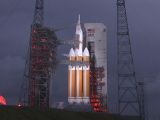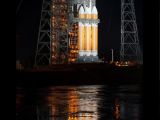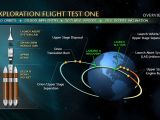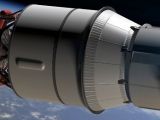Just a few minutes ago, Orion, the spacecraft that NASA expects will one day carry astronauts all the way to Mars, successfully launched from the Space Launch Complex 37 at Florida's Cape Canaveral Air Force Station.
The spacecraft left our planet nestled atop a Launch Alliance Delta IV Heavy rocket at precisely 7:05 a.m. EST, NASA says. Just minutes after launch, Orion shook off the panels that helped support it during the first moments of flight.
Latest information shared with the public by NASA astronauts says that the Orion spacecraft is now in Earth's orbit and traveling at a speed of 15,000 miles per hour (some 24,000 kilometers per hour).
Luckily, the Mars-bound spacecraft is racing around our planet way up in the skies. Otherwise, there is no doubt that some really unlucky birds would be seriously spooked.
In about an hour and a half, Orion should reach a height of 3,600 miles (5,800 kilometers). Having circled our planet twice, it will return to Earth and hopefully land in the Pacific Ocean, from where it will be recovered.
What's the big deal with this space flight anyway?
As mentioned, Orion is expected to take astronauts further into space than humanity has ever ventured. More precisely, NASA has high hopes that this new-generation spacecraft will one day take a group of daredevils all the way to Mars.
The thing is that, before being entrusted with carrying people to the Red Planet or some other far away cosmic destination, Orion must prove that it has what it takes to withstand the harsh conditions of space travel. This is where today's flight test comes in.
Thus, scientists say that today's maiden voyage will allow them to test Orion's systems. They stress that, paperwork and lab tests aside, the only way to know whether or not this spacecraft is tough enough to travel to Mars is fly it in space.
Although NASA's would've surely found a few volunteers, today's voyage is performed without any astronauts on board. Instead, the Orion spacecraft carries a whole lot of sensors that will record each and every detail of the flight.
The details of Orion's first adventure in space
Scientists with NASA detail that the spacecraft will complete its first orbit at a height of about 100 miles (160 kilometers). Afterwards, it will soar to the 3,600 miles (5,800 kilometers) that is its target height. Needless to say, this is the moment the brainiacs behind this project are waiting for.
Just to put things into perspective, it must be said that the Orion spacecraft will complete its second orbit on a route that is 15 times higher than the International Space Station. Mind you, it will even pass through the Van Allen radiation belts. Hopefully, it won't be scarred by the experience.
Once the flight is completed, Orion will head back to Earth. During this phase of its adventure, the spacecraft is expected to reach a speed of 25,000 miles per hour (40,200 kilometers per hour) and be exposed to plasma about as twice as hot as molten lava.
Eventually, Orion will slow down, and with the help of parachutes, it will hopefully make a safe landing in the Pacific Ocean. The spacecraft will be recovered and scientists will get to work processing the data that Orion collected during its flight.
If you have a few minutes to spare, be sure to check out the Orion launch video below. For further news on the spacecraft's trip to space and back, keep an eye on this page.
Update 1: Orion successfully reached an altitude of 3,604.2 miles (5,800.3 kilometers) and is now en route back to Earth at a speed of about 20,000 miles per hour (roughly 32,300 kilometers per hour).
The spacecraft is expected to land in the Pacific Ocean at a distance of about 600 miles (965 kilometers) west of the Mexican state of Baja California. It will land just 1.4 miles (2.4 kilometers) east of its predicted target.
NASA says the USS Anchorage and the USNS Salvor, both with the country's Navy, are now in the area. After the spacecraft hits the water, the crew aboard these vessels will track it down and recover it.
Update 2: With the help of three parachutes whose overall surface would cover an entire football field, NASA’s Orion spacecraft made a successful landing in the Pacific Ocean. It was recovered just minutes later and will be entrusted to scientists for data processing.
“Today was a great day for America,” Flight Director Mike Sarafin said in a statement. “While this mission was unmanned, we were all aboard Orion,” he added.
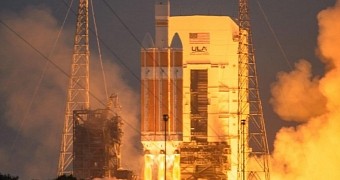
 14 DAY TRIAL //
14 DAY TRIAL // 

